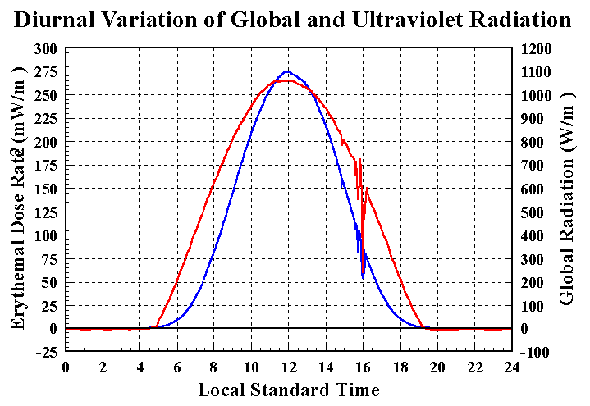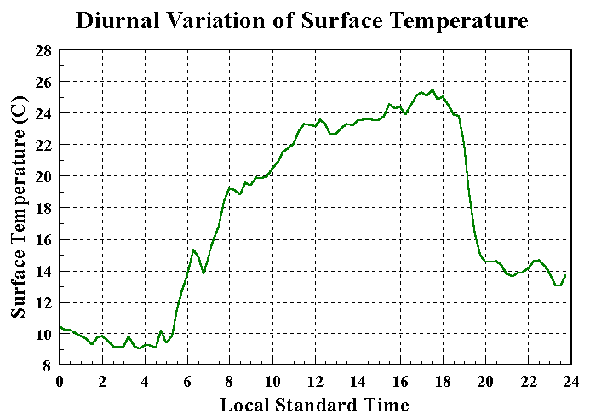The
variation throughout the course of the day(diurnal) of UV
radiation is much like that of visible light. Figure 1 overlays
a mostly clear day's observations of the "global" or mostly
visible radiation and UV radiation. Notice how UV radiation
is much more attenuated than the global at high solar zenith
angles in the early morning and late afternoon. This is because
the two components which make up UV and all other forms of
radiation; the direct and the diffuse, are both greatly affected
at these low sun angles. Direct UV radiation is greatly reduced
by the increased absorption by stratospheric ozone during
its increased path length through the atmosphere (about 6
times more than when the sun is directly overhead). Also,
radiation at the UV wavelengths is scattered much more than
visible light. This further decreases the direct component
and increases the diffuse component. As the Sun rises above
the horizon, the amount of absorption in the stratosphere
and scattering in the troposphere is reduced. The result is
a drastic increase in UV radiation reaching the surface.
The variation of surface temperature differs significantly
from both UV and global radiation. Where as the diurnal variation
of incoming infrared radiation is similar to that of global
radiation, there exists a delay between the time when the
earth-atmosphere system is irradiated to when the temperature
begins to increase. This is know as the thermal response.
Depending upon the time of the year the lag in time between
the peak radiation flux reaching the surface (solar noon)
to when the surface temperature reaches its maximum can be
as great as 3 to 4 hours. For example, have you noticed that
it is hottest in the mid afternoon not at noon. A typical
summer surface temperature plot is shown in Figure 2 showing
how the peak temperature is reached later in the afternoon.
By the time of the temperature maximum, the amount of UV radiation
reaching the surface has decreased almost by half of that
at solar noon.
Figure 1:

Figure 2:

Return to UV Index
Last Updated September 2, 1997 by Craig S. Long
Disclaimer and Reproduction Information: Information in NASD does not represent NIOSH policy. Information included in NASD appears by permission of the author and/or copyright holder. More